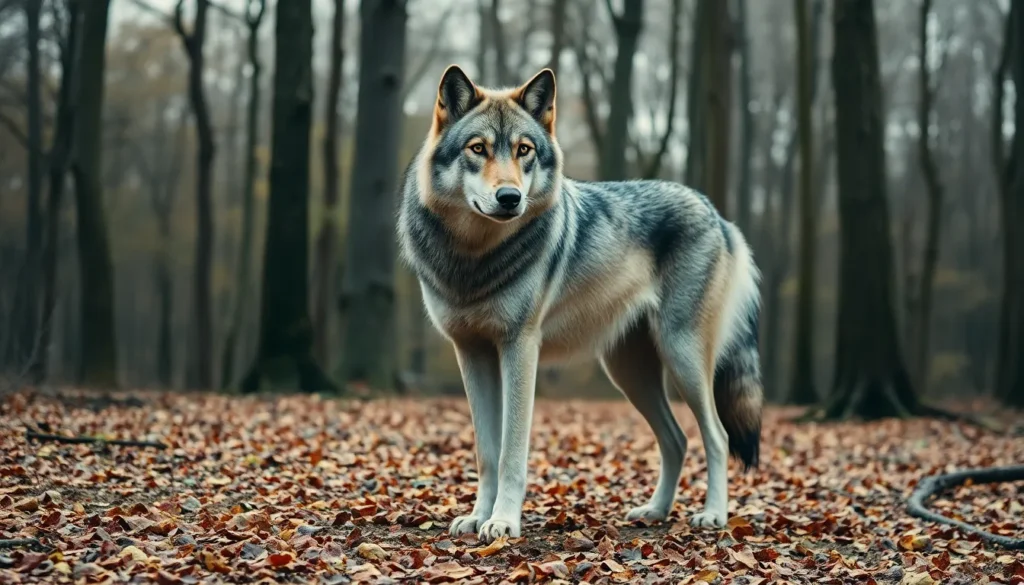In a world where first impressions are made in milliseconds, visual identity trends are the secret sauce to standing out. Think of it as your brand’s wardrobe—if it’s looking a bit outdated, it’s time for a makeover. From bold colors to minimalist designs, the right visual identity can turn heads and spark conversations faster than you can say “graphic designer.”
Table of Contents
ToggleOverview of Visual Identity Trends
Visual identity trends continuously evolve, influencing how brands present themselves. Bold colors dominate, capturing viewer attention and fostering emotional connections. Minimalist designs prioritize clarity, emphasizing key messages and brand values. Unique typography stands out, aiding recognition and enhancing brand personality.
Geometric shapes and patterns create visual intrigue, often reflecting modernity and innovation. Interactive elements engage audiences, encouraging deeper interaction with brand content. Fluid designs adapt across platforms, ensuring versatility in showcasing brand identity.
Sustainability in design resonates with consumers, increasing demand for eco-friendly materials and practices. Inclusive design caters to diverse audiences, promoting accessibility and representation. Illustrative visuals convey narratives effectively, making messages more relatable.
Gradient colors add depth, enhancing visual appeal and modernity. Retro aesthetics gain popularity, invoking nostalgia while blending with contemporary styles. Custom illustrations differentiate brands, establishing a unique visual language.
The integration of motion graphics captures attention, making digital experiences dynamic and memorable. Data visualization simplifies complex information, improving understanding and engagement.
Attention to visual identity trends ensures brands remain relevant in competitive landscapes, creating lasting impressions. Adopting these trends fosters authenticity and builds trust with audiences, ultimately enhancing brand loyalty.
Key Elements of Visual Identity
Visual identity encompasses several key elements that collectively shape a brand’s perception. Understanding these elements helps brands communicate effectively and resonate with their audiences.
Logo Design
Logo design serves as the cornerstone of visual identity. Crafted to be distinctive, an effective logo conveys the essence of a brand in a simple graphic form. Iconic logos often feature unique shapes, clever symbolism, or stylized text to enhance recognition. The contrast of bold and minimalist styles can attract attention and spark curiosity. Consistency across all applications ensures that the logo maintains its impact, whether in print or digital formats. A logo’s adaptability becomes increasingly important as brands expand into new markets.
Color Palettes
Color palettes play a vital role in conveying emotions and enhancing brand recognition. Vibrant colors can evoke strong feelings, while muted tones often promote sophistication and calmness. Brands must choose colors that align with their core values and target demographics to create an emotional connection. The use of complementary colors can establish visual harmony, making the brand more appealing. Additionally, leveraging color psychology helps shape consumer perceptions, influencing behaviors and decisions.
Typography
Typography significantly impacts a brand’s voice and personality. Selecting the right typefaces can underscore a brand’s positioning, whether modern, traditional, or playful. Custom fonts offer uniqueness, providing an opportunity to stand out in the marketplace. Clarity and legibility remain essential, especially in digital formats, where readability affects user experience. Hierarchical typography guides viewers’ attention, ensuring critical messages receive proper emphasis. As typography evolves, incorporation of variable fonts can also enhance dynamic branding.
Emerging Visual Identity Trends
Visual identity trends continue to shape how brands communicate their values and connect with audiences. Notably, several key trends are emerging, enhancing brand visibility and engagement.
Minimalism
Minimalism stands out as a powerful trend in visual identity. Designers often focus on clean lines and simple layouts to create impactful visuals. Choosing a limited color palette enhances clarity and ensures that messages remain easy to grasp. Brands adopting minimalistic designs experience stronger recognition, as simplicity often resonates better with consumers. Additionally, ample white space draws attention to essential elements, reinforcing the brand’s core message effectively.
Bold Colors and Shapes
Bold colors and geometric shapes capture attention and evoke emotions. Bright and vibrant color schemes stimulate engagement, making brands feel energetic and approachable. Recently, brands have shifted towards dynamic shapes that add movement to designs. Curvy forms and sharp angles offer a sense of uniqueness and innovation. Utilizing contrasting colors helps capture viewer interest, pushing the visual boundaries and encouraging memorable interactions.
Custom Illustrations
Custom illustrations create distinctiveness in brand identity. Unique artwork reflects a brand’s personality and fosters deeper emotional connections with audiences. Brands often leverage personal styles that align with their values, resulting in memorable visuals that stand out in crowded markets. Incorporating character-driven illustrations makes storytelling more relatable and engaging. Furthermore, these tailored visuals help convey complex messages simply and effectively, enhancing recognition and recall.
Impact of Technology on Visual Identity
Technology significantly influences visual identity, transforming how brands connect with their audiences. Digital tools play a unique role in enhancing brand presence.
Digital Branding
Digital branding involves creating a distinct online presence. Visual elements like logos and color schemes need consistency across platforms, ensuring instant recognition. Social media platforms serve as vital channels to showcase these visual elements. Brands utilize high-quality images, engaging videos, and cohesive color palettes to capture attention. They also recognize the importance of responsive design, making experiences seamless across devices. Analytics tools allow brands to track performance and adjust visual strategies for maximum impact. Brands that embrace innovative digital strategies enhance their connection with consumers.
Augmented Reality Experiences
Augmented reality (AR) brings dynamic visual identity to life. Brands integrate AR features into marketing campaigns, providing immersive experiences for audiences. These interactive elements create memorable moments that foster engagement and deepen brand loyalty. For instance, virtual try-ons enable consumers to visualize products in real-time, enhancing decision-making. AR also allows for storytelling, where brands share their narratives through interactive visuals. By leveraging AR, brands position themselves at the forefront of technology and creativity. They stand out in a crowded marketplace, making a lasting impression on their audiences.
Conclusion
Staying ahead in visual identity trends is essential for brands aiming to make a lasting impact. As the landscape evolves bold colors minimalist designs and innovative technologies like AR play pivotal roles in capturing audience attention. Embracing these trends not only enhances brand recognition but also fosters deeper emotional connections with consumers.
Brands that prioritize a cohesive and engaging visual identity are better equipped to navigate the complexities of modern marketing. By focusing on clarity relatability and sustainability they can build trust and loyalty in an increasingly competitive environment. Adapting to these visual identity trends ensures that brands remain relevant and resonate with diverse audiences.









